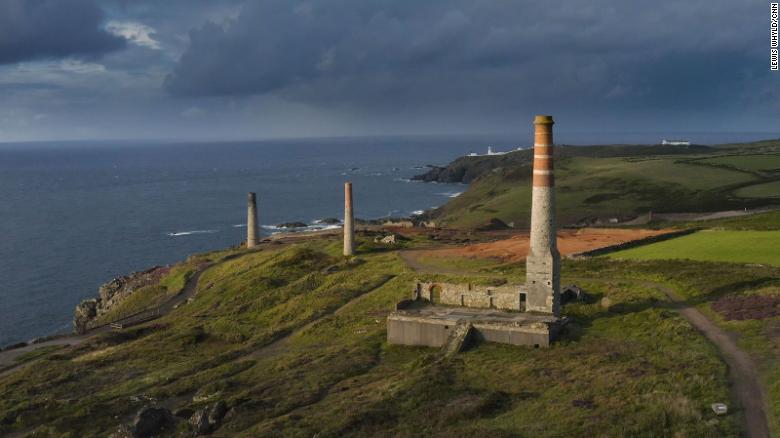Britain’s last tin mine could reopen as tech companies chase ethical metals

Once the mining center of the world, Cornwall is dotted with more than 2,000 derelict engine houses, many of them along its rugged coastline. Tin mining and smelting in this southwest corner of rural England dates back thousands of years. But in the late 19th century, when new deposits were discovered in East Asia and South America, English tin became uncompetitive and Cornish miners scattered overseas in search of new prospects. Cornwall has struggled ever since. It is the second-poorest region in Northern Europe, according to EU data, and it struggles with higher rates of child poverty and homelessness than the rest of the United Kingdom. Now its fortunes may be looking up again. Ruined tin mines could be revived because tech companies and carmakers are racing to find ethical sources of the metal. And the last mine to close —South Crofty — could be the first to reopen.”The ethically sourced aspect of the high tech world today is a very prominent issue, certainly in tin,” said Richard Williams, CEO of Strongbow Exploration, a Canadian firm which plans to reopen the South Crofty mine by 2021. “There’s a real push from end-users and investors to ensure that there’s a clean chain of supply.”Tin is considered the glue of the technology world. Used as solder in circuit boards of many consumer electronics and as an additive in batteries, it’s a critical component in smartphones, electric vehicles, and 5G technology. Global tin consumption increased by more than 2.5% last year, and growth is expected to continue, according to the International Tin Association. “So you’re going to see a growing demand for the use of tin,” Williams said. “And what better way to avoid the concept that you’re sourcing tin from potential areas of conflict or areas where you have child exploitation than to mine it here in Cornwall.”Related: The world’s biggest metal exchange is getting serious about child labor and conflict mineralsIf it reopens, South Crofty would become the only working tin mine in Europe (excluding Russia) or North America. However, reviving it will take more time and more investment. Three hundred meters below ground, the company needs to survey and drain hundreds of miles of tunnels. It will also need to recruit hundreds of people to work underground, which could be a tough ask in an area where many people have moved on to office jobs and employment in the service and tourism industries. However, Cornwall is still training mining engineers and geology experts at the Camborne School of Mines in Penryn. “There are many ex-graduates who came from Camborne, actually trained at South Crofty, and now ply their trade around the world,” Williams said. “But many of them still live in Cornwall and I’m sure many of them would like to come back and work at South Crofty rather than travel internationally.”At a time when Brexit’s economic impact is looming large in this part of the United Kingdom — Cornwall depends on the European Union for 55% of its exports and receives millions of pounds each year from EU regional development funds — local officials say the efforts required to reopen the mine are worth it. “It would be great to see [a revival] happen,” said Mark Camp, spokesman for Visit Cornwall and tour guide for historic Cornish mining sites. “Cornwall now is relying on tourism for a lot of its income. So it would be great to see the mining come back.”Strongbow Exploration, which is also exploring the potential for lithium extraction in Cornwall, said the mine will create 275 jobs in the area. The fall in the British pound since the Brexit referendum in 2016 means Cornish minerals could once again compete on global markets.”In our minds, this is Brexit-proof,” Williams said. “One of the points that we put forward to Cornwall council and the UK, in particular, is that you can’t move a tin deposit.”Even if tin mining doesn’t return to Cornwall on a grand scale, the tourism inspired by the county’s industrial past should continue to provide a boost to the economy. About 4.5 million visitors flock to the peninsula each year, and the number visiting historic mines is increasing — in part thanks to the BBC period drama Poldark and the tin coast’s designation in 2006 as a UNESCO World Heritage site.Families who mined for decades have pivoted from tin to tourism. Mark Wills, owner of Blue Hills Tin, a mining visitor’s center and tin jewelry shop, said his father was the last of four generations to work underground. “When the [tin] price dropped in the late 1980s, there was no longer a profit in selling it wholesale. So we gradually renovated some old machinery on-site and began selling it ourselves,” he said.Today, Blue Hills Tin attracts visitors from all over the world who are interested in the history behind 4,000 years of tin production. “It really captures the imagination,” Wills said. “Whether people are just interested in the architecture of the buildings or the physical process that the mineral has to go through.”Strongbow’s research suggests South Crofty has some of the highest grade tin deposits in the world. Cornwall’s captivation with tin may not just be a thing of the past.







